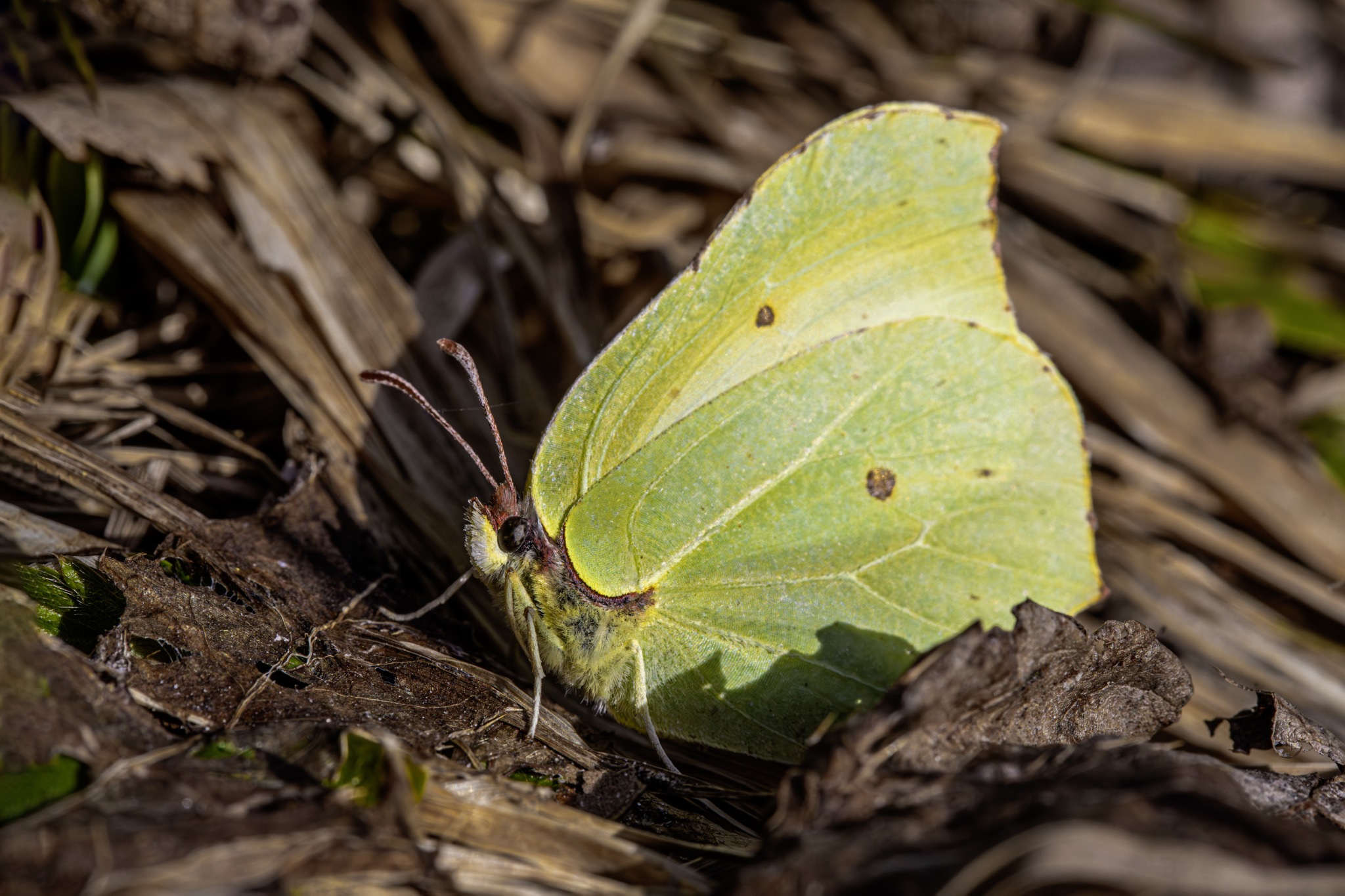The Common Brimstone (Gonepteryx rhamni) is a striking butterfly in the family Pieridae, known for its vivid yellow coloration and long, leaf-shaped wings. Often regarded as one of the first butterflies to appear in spring, it is a symbol of renewal and resilience in temperate regions.
Physical Description
- Wingspan:
- 60–74 mm, with males generally larger and brighter.
- Coloration:
- Males: Bright lemon yellow.
- Females: Pale greenish-white.
- Both sexes have small orange spots near the center of each wing.
- Wing Shape:
- Long and pointed, mimicking the appearance of leaves, aiding in camouflage when resting.
Behavior
- Flight:
- Strong and purposeful, often covering significant distances.
- Activity Period:
- One of the longest-lived butterflies, adults emerge in late summer, overwinter, and are active from March to October.
- Feeding:
- Adults primarily feed on nectar from wildflowers like dandelions, primroses, and clover.
Habitat
- Found in a variety of sunny, open habitats, including:
- Woodlands, forest edges, and clearings.
- Hedgerows and gardens.
- Meadows and grasslands.
- Prefers areas with abundant food plants and shelter for overwintering.
Life Cycle
- Eggs:
- Laid singly on host plants like buckthorn (Rhamnus cathartica) and alder buckthorn (Frangula alnus).
- Larvae:
- Bright green with faint white stripes, blending perfectly with leaves.
- Pupae:
- Green and angular, resembling a leaf to deter predators.
- Adults:
- Emerge in summer, overwinter in dense vegetation, and mate in spring.
Distribution
- Widely distributed across Europe, parts of North Africa, and Asia.
- Thrives in temperate climates, ranging from lowlands to mountainous regions.
Conservation Status
- Classified as Least Concern, with stable populations in most areas.
- Local declines may occur due to habitat loss and the removal of buckthorn, its host plant.
Ecological Role
- Pollination:
- Feeds on nectar and contributes to the pollination of early-blooming flowers.
- Food Source:
- Preyed upon by birds, small mammals, and predatory insects at various life stages.
Interesting Facts
- Master of Camouflage:
- Its leaf-like wing shape and coloration help it evade predators when at rest.
- Early Sign of Spring:
- One of the first butterflies to emerge in spring, often before most flowers bloom.
- Long Lifespan:
- Adults can live up to 10 months, one of the longest lifespans for butterflies.
Summary
The Common Brimstone (Gonepteryx rhamni) is a resilient and adaptive butterfly, perfectly suited to its environment. Its bright colors and long lifespan make it a welcome sight across Europe’s landscapes. Preserving its habitats, particularly those with buckthorn, is essential for ensuring the survival of this graceful and iconic species.
Visited 591 times, 34 visit(s) today
Views: 1051
Subscribe to the newsletter:
